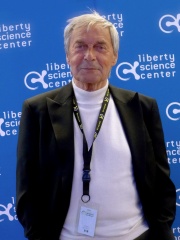
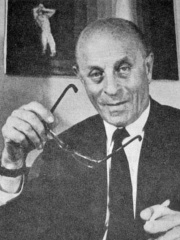
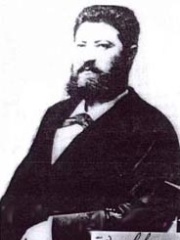
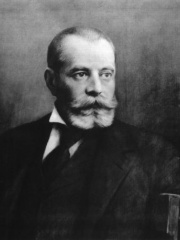
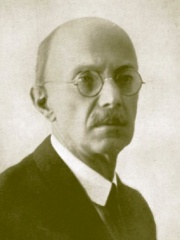
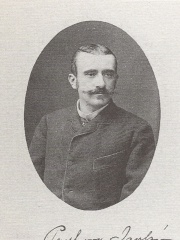
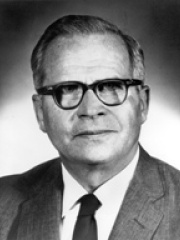
The Most Famous
INVENTORS from Hungary
Top 8
The following people are considered by Pantheon to be the most legendary Hungarian Inventors of all time. This list of famous Hungarian Inventors is sorted by HPI (Historical Popularity Index), a metric that aggregates information on a biography's online popularity.

1. Ernő Rubik (b. 1944)
With an HPI of 75.03, Ernő Rubik is the most famous Hungarian Inventor. His biography has been translated into 56 different languages on wikipedia.
Ernő Rubik (Hungarian: [ˈrubik ˈɛrnøː]; born 13 July 1944) is a Hungarian architect and inventor, widely known for creating the Rubik's Cube (1974), Rubik's Magic, and Rubik's Snake. While Rubik became famous for inventing the Rubik's Cube and his other puzzles, much of his recent work involves the promotion of science in education. Rubik is involved with several organizations such as Beyond Rubik's Cube, the Rubik Learning Initiative and the Judit Polgar Foundation, all of which aim to engage students in science, mathematics, and problem solving at a young age. Rubik studied sculpture at the Academy of Applied Arts and Design in Budapest and architecture at the Technical University, likewise located in Budapest. While a professor of design at the academy, he pursued his hobby of building geometric models. One of these was a prototype of his cube, made of 27 wooden blocks; it took Rubik a month to solve the problem of the cube. It proved a useful tool for teaching algebraic group theory, and in late 1977 Konsumex, Hungary's state trading company, began marketing it. By 1980, Rubik's Cube was marketed throughout the world, and over 100 million authorized units, with an estimated 50 million unauthorized imitations, were sold, mostly during its subsequent three years of popularity. Approximately 50 books were published describing how to solve the puzzle of Rubik's Cube. Following his cube's popularity, Rubik opened a studio to develop designs in 1984; among its products was another popular puzzle toy, Rubik's Magic.

2. László Bíró (1899 - 1985)
With an HPI of 74.34, László Bíró is the 2nd most famous Hungarian Inventor. His biography has been translated into 56 different languages.
László József Bíró (Hungarian: [ˈlaːsloː ˈjoːʒɛf ˈbiːroː]; né Schweiger; 29 September 1899 – 24 October 1985), Hispanicized as Ladislao José Biro, was an Argentine, Hungary-born Jewish inventor who patented the first commercially successful modern ballpoint pen. The first ballpoint pen had been invented roughly 50 years earlier by John J. Loud, but it was not a commercial success.

3. David Schwarz (1850 - 1897)
With an HPI of 61.32, David Schwarz is the 3rd most famous Hungarian Inventor. His biography has been translated into 19 different languages.
David Schwarz (Hungarian: Schwarz Dávid; Croatian: David Švarc, pronounced [dǎʋit ʃʋârt͡s]; 20 December 1850 – 13 January 1897) was a Hungarian aviation pioneer. He is known for creating an airship with a rigid envelope made entirely of metal. Schwarz died only months before the airship was flown. Some sources have claimed that Count Ferdinand Graf von Zeppelin purchased Schwarz's airship patent from his widow, a claim which has been disputed. He was the father of the opera and operetta soprano Vera Schwarz (1888–1964).

4. Tivadar Puskás (1844 - 1893)
With an HPI of 60.21, Tivadar Puskás is the 4th most famous Hungarian Inventor. His biography has been translated into 19 different languages.
Tivadar Puskás de Ditró (in older English technical literature: Theodore Puskás) (17 September 1844 – 16 March 1893) was a Hungarian inventor, telephone pioneer, and inventor of the telephone exchange. He was also the founder of Telefon Hírmondó.
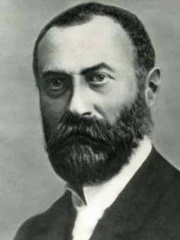
5. Ottó Bláthy (1860 - 1939)
With an HPI of 59.79, Ottó Bláthy is the 5th most famous Hungarian Inventor. His biography has been translated into 24 different languages.
Ottó Titusz Bláthy (11 August 1860 – 26 September 1939) was a Hungarian electrical engineer. During his career he became the co-inventor of the modern electric transformer, the voltage regulator, the AC watt-hour meter, the turbo generator, the high-efficiency turbo generator and the motor capacitor for the single-phase (AC) electric motor. Bláthy's career as an inventor began during his time at the Ganz Works in 1883. There, he conducted experiments for creating a transformer. The name "transformer" was created by Bláthy. In 1885 the ZBD model alternating-current transformer was invented by three Hungarian engineers: Ottó Bláthy, Miksa Déri and Károly Zipernowsky. (ZBD comes from the initials of their names). In the autumn of 1889 he patented the AC watt-meter.

6. Kálmán Kandó (1869 - 1931)
With an HPI of 57.55, Kálmán Kandó is the 6th most famous Hungarian Inventor. Her biography has been translated into 16 different languages.
Kálmán Kandó de Egerfarmos et Sztregova (egerfarmosi és sztregovai Kandó Kálmán; July 10, 1869 – January 13, 1931) was a Hungarian engineer, the inventor of phase converter and a pioneer in the development of AC electric railway traction.

7. Paul von Jankó (1856 - 1919)
With an HPI of 57.09, Paul von Jankó is the 7th most famous Hungarian Inventor. His biography has been translated into 21 different languages.
Paul von Jankó (2 June 1856 – 17 March 1919) was a Hungarian pianist, engineer and Idist. He first studied mathematics and music in Vienna, where he was a pupil of H. Schmitt, J. Krenn and Anton Bruckner. He then moved to Berlin where he during the years 1881 and 1882 studied mathematics at the city's University, and piano with H. Erlich. Jankó was also a proponent of the international auxiliary language Ido, though he had formerly been an Esperantist. On the 16th of August 1909, Jankó became a member of the Ido-Akademio, the predecessor to the ULI. He was secretary of the Academy from 1912 to 1913. Jankó also created the Ido-Stelo, the symbol of the Ido movement, modelled after the Verda Stelo. In 1882 Jankó patented the Jankó keyboard, with six rows of keys, drawing upon earlier designs by Conrad Henfling (1708), Johann Rohleder (1791) and William Lunn (1843). From the year 1886 he used this instrument at his own concert journeys. The Norwegian pianist Tekla Nathan Bjerke was a pupil of Jankó, and played many concerts in Norway using this instrument. The Jankó keyboard wasn't used by many people as it was hard for them to relearn new fingering on a strange keyboard.

8. Peter Carl Goldmark (1906 - 1977)
With an HPI of 56.13, Peter Carl Goldmark is the 8th most famous Hungarian Inventor. His biography has been translated into 15 different languages.
Peter Carl Goldmark (born Péter Károly Goldmark; December 2, 1906 – December 7, 1977) was a Hungarian-American engineer who, during his time with Columbia Records, was instrumental in developing the long-playing microgroove 331⁄3 rpm phonograph disc, the standard for incorporating multiple or lengthy recorded works on a single disc for two generations. The LP was introduced by Columbia's Goddard Lieberson in 1948. Lieberson was later president of Columbia Records from 1956–1971 and 1973–1975. According to György Marx, Goldmark was one of The Martians.
People
Pantheon has 8 people classified as Hungarian inventors born between 1844 and 1944. Of these 8, 1 (12.50%) of them are still alive today. The most famous living Hungarian inventors include Ernő Rubik. The most famous deceased Hungarian inventors include László Bíró, David Schwarz, and Tivadar Puskás.
Living Hungarian Inventors
Go to all RankingsDeceased Hungarian Inventors
Go to all RankingsLászló Bíró
1899 - 1985
HPI: 74.34
David Schwarz
1850 - 1897
HPI: 61.32
Tivadar Puskás
1844 - 1893
HPI: 60.21
Ottó Bláthy
1860 - 1939
HPI: 59.79
Kálmán Kandó
1869 - 1931
HPI: 57.55
Paul von Jankó
1856 - 1919
HPI: 57.09
Peter Carl Goldmark
1906 - 1977
HPI: 56.13
Overlapping Lives
Which Inventors were alive at the same time? This visualization shows the lifespans of the 7 most globally memorable Inventors since 1700.

